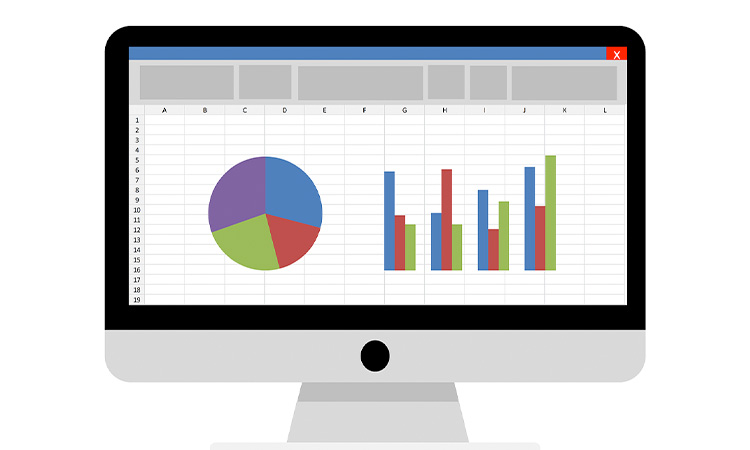Crafting a Project Brief That Can’t Fail: Want to Know How?
Creating an unbreakable project brief is crucial for the success of any project, big or small. This document serves as the roadmap guiding your project from an idea to reality. Here’s a simple introduction to what a project brief is and why it’s so important.
A project brief is essentially the backbone of your project. It’s not just a formality; it’s the tool that ensures everyone involved understands the project’s goals and their roles. It’s a common misconception that project briefs are only crucial for large-scale or fully fleshed-out projects. In reality, even the smallest project or an idea in its infancy stage can significantly benefit from a well-structured brief. So, whether you’re developing a brand-new digital product or adding features to an existing one, your project begins with this brief.

You might wonder, ‘What exactly goes into a great project brief?’. Well, it’s more than just jotting down ideas. It’s about clearly defining your project’s purpose, objectives, and the path you plan to take. This clarity is what transforms a good project into a great one.
For those new to the realm of project management, the concept of a project brief might seem a bit daunting. But don’t worry, it’s not as complicated as it seems. With the right approach, you can craft a brief that sets your project up for success.
In short, a project brief is your first step towards turning your vision into reality. It’s the document that aligns your team, clarifies your objectives, and sets the tone for your project. So, let’s get started on creating a project brief that makes a lasting impact.
What is a project brief?
Consider a project brief as a mini-guide for your project. It’s not super detailed like a full plan, but it’s super useful. It tells everyone – your team, clients, and stakeholders – what the project’s all about and what you’re aiming to do. Think of it as a handy overview of your goals, what you’re planning to deliver, when, and how.
This brief is a big deal because it gets everyone on the same page right from the start. For clients, a well-structured brief offers clarity and direction, ensuring that their vision and objectives are accurately conveyed and understood. It’s the first step in transforming an abstract idea into a tangible project, showing where you’re headed and how you plan to get there.
Moreover, the project brief serves as a critical tool for internal team alignment before engaging with external partners. By ensuring your team’s vision and goals are unified, it streamlines communication and collaboration with design and development partners. This internal consensus sets a strong foundation for a successful and cohesive external partnership, making the project brief an essential step for effective project initiation.
On the service provider side, the project brief gives us the basics so we can start talking about what needs to be done, figure out potential risks, and work out the finer details like costs and who’s free to work on what. This understanding leads to a more streamlined development process, where we can focus our efforts on meeting your specific needs, reducing the risk of miscommunication and project delays.
Ultimately, a well-structured project brief benefits everyone. It’s a bridge between your vision and our execution. It’s a collaborative tool that aligns our efforts with your goals, ensuring that we’re not just working for you, but working with you towards a common objective. To put it briefly, it helps you give us the info we need, which lets us support you better. Putting in the effort to make a good brief pays off for everyone involved.
Here’s how a project brief benefits you:
- Encourages deliberate focus on objectives.
- Confirms essential details for the project.
- Reduces time spent on explaining project details.
- Minimizes misunderstandings between team members.
- Speeds up the transition from initial discussions to decision-making.
Additionally, here’s how it assists us:
- Provides a clear understanding of the project’s basics.
- Serves as a starting point for valuable discussions.
- Aids in planning the workshop and minimizing project risks.
- Helps verify team availability.
- Allows for more precise and prompt project estimates.
This approach demonstrates its benefits for all parties involved. A solid project brief doesn’t just help the team know what to do; it also lets us, your digital buddies, give you the best help possible. In the end, it’s a win-win for everyone.
Guidelines for Writing an Effective Project Brief
With a rich history spanning over 7 years in digital development, our team at BrightMarbles Group has encountered and crafted an extensive variety of project briefs. From start-ups breathing life into their first concept to established enterprises revamping complex systems, we’ve tailored our approach to suit every unique need. Each project brief we’ve dealt with has been as diverse as the clients we serve, ranging from simple outlines to intricate plans. This variety has honed our ability to distill even the most complex ideas into clear, actionable project briefs. It’s this seasoned perspective that enables us to guide our clients effectively, turning even the most nascent ideas into well-defined, successful projects.
To create an effective project brief, answer five key questions: what you’re creating, why, for whom, by when, and your budget. Describe the project (e.g., app, website), its purpose, and identify the target audience. Set a clear timeline and be transparent about your budget to focus on essential, cost-effective solutions. This brief guides every aspect of the project, ensuring alignment with its objectives.
Thus, to create a project brief that is both useful and comprehensive, just remember these key points and you’ll be well on your way:
- Project Overview: Begin with a comprehensive overview. This section should capture the essence of your project, clearly defining what you are planning to develop and the reasons behind it. Whether it’s a new digital service, an app, or an innovative platform, detail your vision. Include any background work, such as research, initial ideas, or relevant links, to provide a complete picture.
- Business Goals and Objectives: Clearly articulate your project’s goals. What are you aiming to achieve? This could range from increasing market share to improving customer engagement or introducing a new product line. Setting SMART (Specific, Measurable, Achievable, Relevant, Time-bound) objectives provides a clear direction and measurable targets.
- Scope and Technical Requirements: Detail the project’s scope, including the desired features and technical specifications. Are there specific platforms or technologies you want to focus on? Understanding the scope helps in aligning technical resources and setting realistic expectations.
- Target Audience: Deeply understand your target audience. Who are they, and what are their needs and preferences? This information is crucial for tailoring your project to meet their expectations and ensuring its relevance and success.
- Timeline and Milestones: Define a realistic timeline for your project, including key milestones. Consider any external factors that could influence the timeline, such as market trends or seasonal demands. A well-planned timeline helps in tracking progress and ensures timely delivery.
- Design and Brand Guidelines: Define the visual and brand identity standards for the project. This should include specific color palettes, typography, logo usage, and other visual elements that align with your company’s branding. Additionally, outline the principles of design that the project will adhere to, ensuring a consistent and appealing user experience that resonates with your target audience.
- Budget and Resources: Be transparent about your budget constraints and resource availability. This clarity aids in making informed decisions about project scope and ensures that the project remains financially viable.
- Stakeholder and Team Alignment: The project brief should align with the interests and expectations of all stakeholders and team members. This alignment is key to ensuring everyone is working towards the same goals and understands their roles and responsibilities.
- Additional Elements: Depending on your project’s nature, consider including other relevant elements. These might include market research, competitive analysis, design materials like wireframes or mockups, potential challenges or risks, and specific requirements for communication and collaboration.
The project brief is not a final verdict but a starting point. It allows service providers to bring their creative and technical insights to the table, adding value to the client’s initial concept.

What You Can Leave Out of a Project Brief
When you look at the comprehensive list of what to include in a project brief, you might think that more is always better. But that’s not necessarily true. While it’s crucial to be thorough, overloading the brief with too much information can lead to confusion and inefficiency.
Here are some things that you should consider leaving out of your project brief:
- Avoid Overloading Information: Don’t feel compelled to include every piece of information you have. Too much detail, especially if not directly relevant to the project, can clutter the brief and lead to misunderstandings.
- Irrelevant Product Details: If your company has a wide range of products, only mention those that are relevant to the current project. This helps to keep the focus and prevent any confusion.
- Patents and Intellectual Property: Detailed discussions about patents and intellectual property rights are not necessary in the initial brief. Trust that these aspects are being handled appropriately without needing to include them in the brief.
- Legal Document Summarization: Instead of adding extensive legal documentation, briefly outline any critical legal considerations or requirements. This approach keeps the brief focused and actionable.
- Team Information: While contact information is essential, you don’t need to include extensive biographies of team members. A simple link to LinkedIn profiles or a brief introduction is usually sufficient.
- Selective Marketing Material: Include marketing materials only if they are directly relevant to the project, particularly in terms of branding or user experience.
- Discretion with Fundraising Details: Details about fundraising efforts are optional. A general overview of the budget or funding situation is usually enough.
Keep in mind, the primary goal of a project brief is to offer clear, concise, and relevant information that guides the project. Overloading it with unnecessary details can hinder rather than help, consuming time and resources that could be better spent on the actual project work. Keep it focused, relevant, and to the point for the best results.
Unpacked the Project Brief – What’s Next in Business?
We’ve just journeyed through the ins and outs of a project brief. Now, you understand its nuts and bolts, know what to do and what not to do, and have a good idea of what it takes to create an outstanding brief. But let’s delve deeper than just the how-to’s. Grasping the essence of a project brief is like discovering the secret ingredient in a masterful recipe – it’s the difference between something good and something exceptional.
A project brief is more than just a document; it’s a conversation starter, a roadmap, and a vision-aligning tool. It’s like a magic wand that turns your ideas and goals into a clear, actionable plan. By meticulously organizing your thoughts and expectations in a well-crafted brief, you’re setting the stage for successful collaboration.
Think of your project brief as a guiding light, steering your design and development team through the maze of creativity and potential. It’s your story, mission, and aspirations, distilled into a concise guide. Handing over this document is like saying, ‘Here’s my vision, let’s bring it to life.’
So, as you begin to draft your project brief, remember it’s more than just a checklist or a formality. It’s the opening chapter of your project’s success story, laying the groundwork where ideas take shape, and dreams come to life. Let’s start this journey together. Reach out to us – let’s turn your vision into an amazing reality. 😊
About Author
Svetlana Kosić is a marketing specialist who holds a master’s degree in media design in education. With extensive experience in the IT industry, particularly in sales and marketing, Svetlana has honed her skills over the years. She has a profound passion for the written word and expresses her creativity through various outlets, including as a columnist. Svetlana is a staunch advocate against injustice and tirelessly works towards the positive change she desires.
















































Comments16
Lorem ipsum dolor sit amet, consectetur adipisicing elit. Ipsa iste inventore rem Community Guidelines.
by Simon & Garfunkel
by Simon & Garfunkel
by Simon & Garfunkel
by Simon & Garfunkel